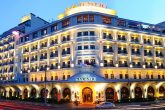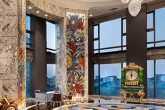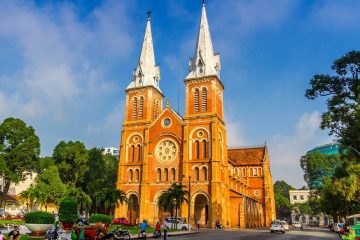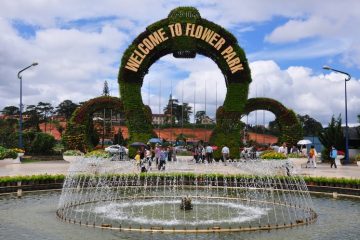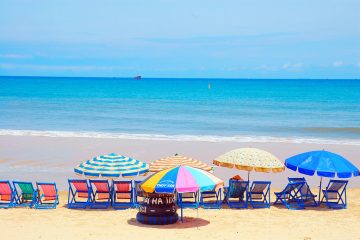Hotline: +84 913223338 - [email protected]
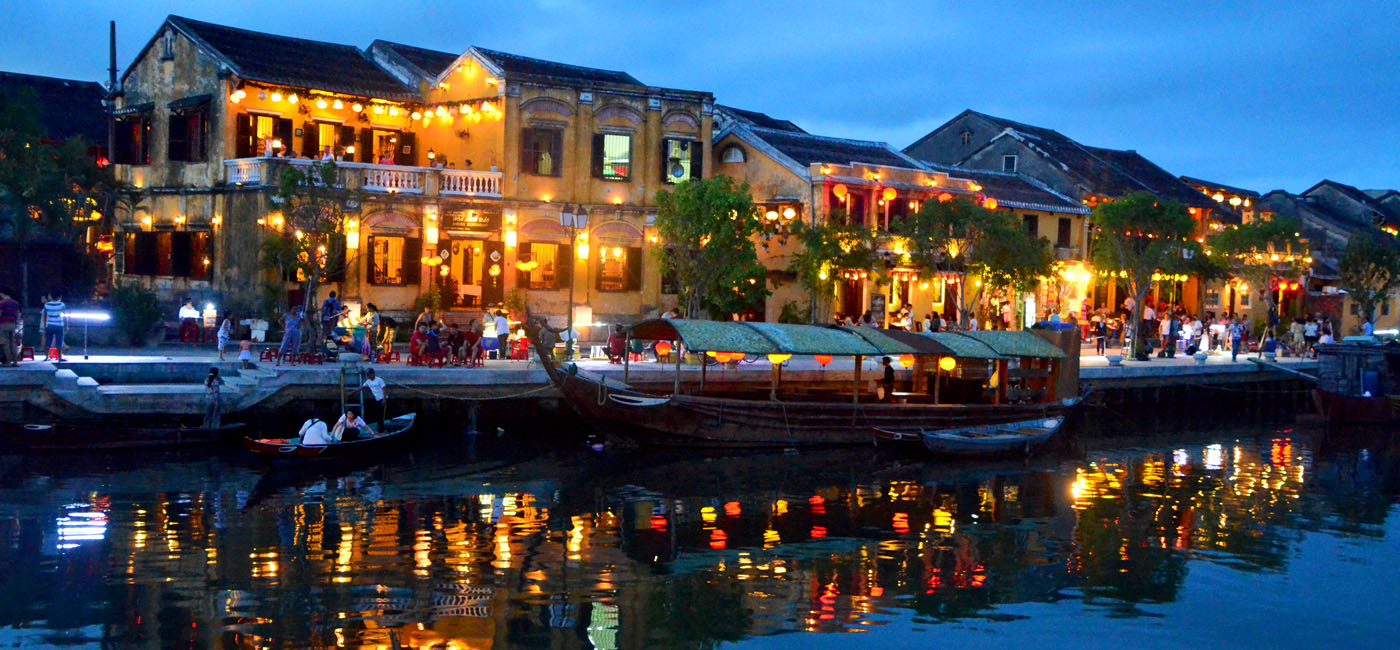
CENTRE VIETNAM WORLD HERITAGE FOR ASIAN
- 05days/04nights
- Hue - Danang - Hoian - My Son Holy Land - Hoi An
-
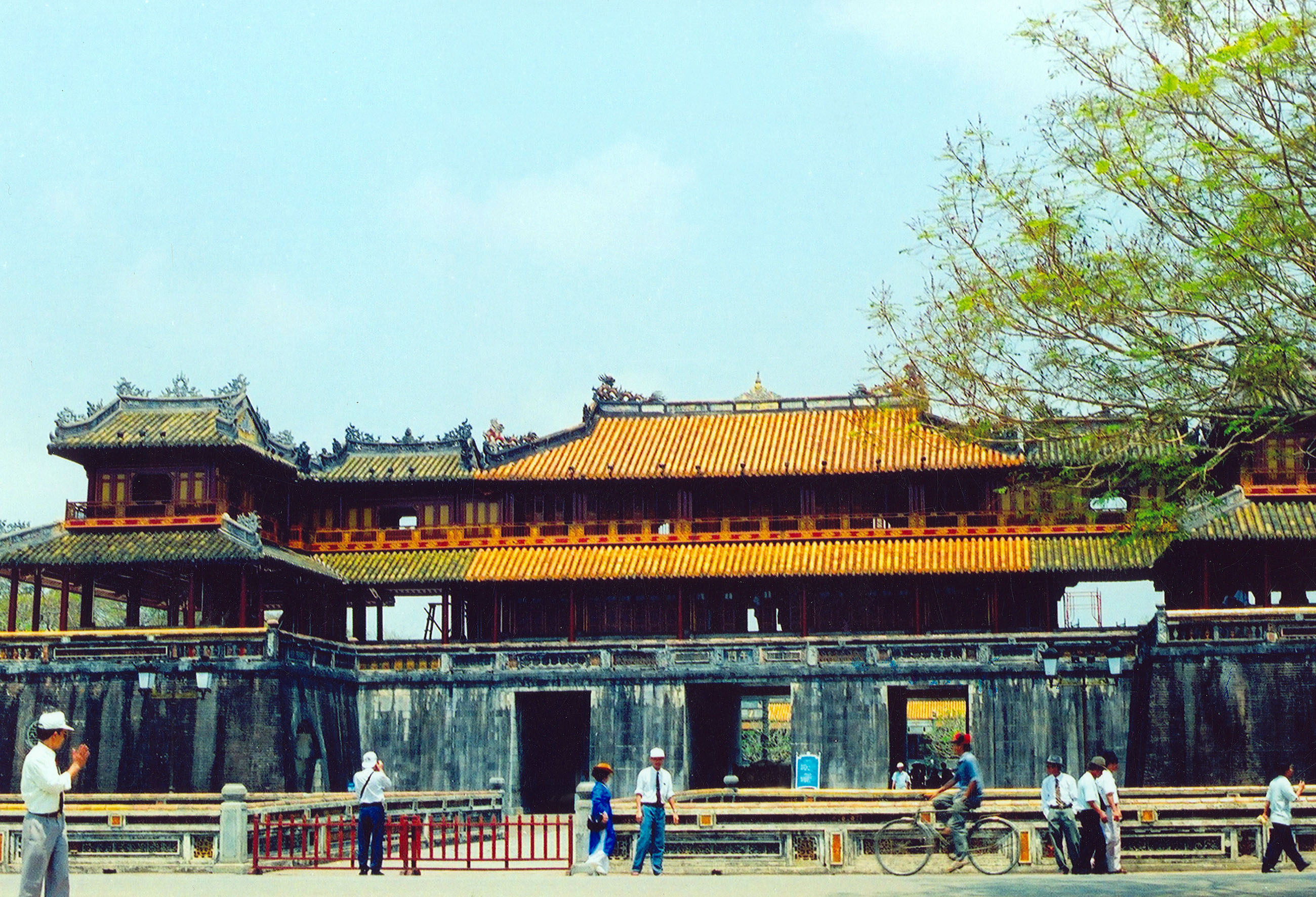 Day 1: Hue arrival (D)
Day 1: Hue arrival (D)Meals: Dinner at local restaurant
Accommodations: at hotel
Transfer: Private vehicle
Activities for today: You are warmly welcomed by our tour guide, transfer to your hotel and start half day city tour by boat to Thien Mu pagoda, Hon Chen temple. Admire sunset on Perfume river. Have typical dinner and enjoy Vietnam traditional folk song and music on Boat. Overnight in Hue.
-------------------------------------------------
+ Thien Mu Pagoda: Built in 1601 between a river and a pine forest, the Thien Mu Pagoda ("Heavenly Lady Pagoda") in Hue is one of the oldest and prettiest religious buildings in the country.
+ Hon Chen Temple for cult of Po Nagar, the Goddess of the ancient Cham minority. After then, the Vietnamese continued the cult and name the Goddess as Heaven Goddess Y A Na. This temple for Goddess appeared in this place centuries ago, but with a very simple design, and after then, reconstructed with a larger and more beautiful architectural scale in 1886.
+ Perfume River: It is a river that crosses the city of Hue. In the autumn, flowers from orchards upriver from Hue fall into the water, giving the river a perfume-like aroma, hence the soubriquet.
-
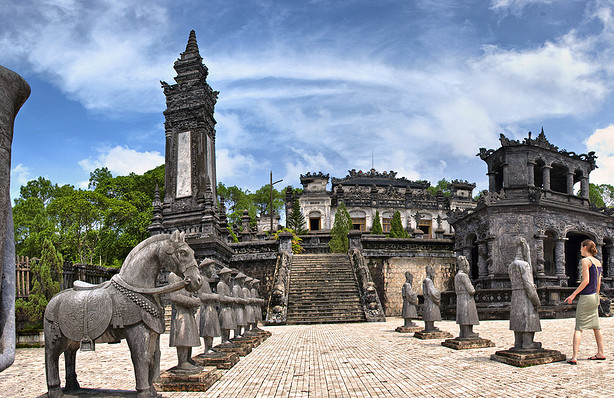 Day 2: Hue city tour (B/L/D)
Day 2: Hue city tour (B/L/D)Meals: Breakfast at hotel, Lunch and Dinner at local restaurant
Accommodations: at hotel
Transfer: Private vehicle
Activities for today: The tour begins with King Khai Dinh Tomb, King Tu Duc Tomb, Minh Mang tomb. Come back to Hue for lunch at local restaurant. After lunch, visit Imperial Citadel. Tour ends at your hotel around 17:30 PM. Overnight in Hue.
-------------------------------------------------
+ The Tomb of Khai Dinh: It was built from 1920 to 1931 taking 11 years to complete. The tomb is a blend of Western and Eastern architecture. It is located on a steep hill outside of the capital city of Huế. on a steep hill outside of the capital city of Huế.
+ Tomb of Tu Duc: It is built for the Nguyễn Emperor Tự Đức and took three years to build from 1864–1867. It is divided into a Temple Area and a Tomb Area.
+ Royal Tomb of King Ming Mang: It is the final resting place of one of the Nguyen Dynasty's staunchest Confucians, whose reign represents the apex of Nguyen power over the country.
+ Imperial Citadel: It is comparatively modern in European terms. Built over thirty years in the early part of the 19th century, the Citadel encompasses three ‘courts’ covering a total of 6 km.
-
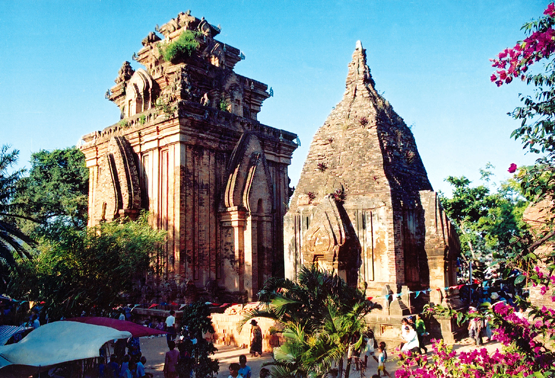 Day 3: Hue - Danang - My Son Holy Land - Hoi An (B/L/D)
Day 3: Hue - Danang - My Son Holy Land - Hoi An (B/L/D)Meals: Breakfast at hotel, Lunch and Dinner at local restaurant
Accommodations: at hotel
Transfer: Private vehicle
Activities for today: In the morning, take a private car from Hue to Hoian, pass Marble Mountain, Non Nuoc Beach, Lang Co beach, Hai Van pass. Early lunch and drive to My Son Holy Land – one of the world heritage sites of Vietnam. Back to Hoi An for beach relax on beach or on the bank of Thu Bon river. Overnight in Hoi An.
------------------------------------------------
+ Marble Mountains: This group of 5 mountains, whose names represent the 5 elements, Popular place for spiritual retreat and pilgrimage, is composed of several pagodas Buddhist, remnants of the Champa civilization and caves inside the mountains, natural caves formed by erosion, water and the passage of time.
+ Non Nuoc Beach: It is a white sandy beach on the outskirts of Da Nang is renowned for both its spectacular beauty and for its history as an R&R destination for American troops during the Vietnam War. Today, the beach is home to expensive resorts, surfing and entertainment facilities.
+ The Hai Vân Pass: is an approximately 21 km long mountain pass on National Route 1A in Vietnam. It traverses a spur of the larger Annamite Range that juts into the East Sea of Viet Nam, on the border of Đà Nẵng and Thừa Thiên–Huế Province, near Bạch Mã National Park. Its name refers to the mists that rise from the sea, reducing visibility. Historically, the pass was a physical division between the kingdoms of Champa and Đại Việt.
+ My Son Holy Land: is a cluster of abandoned and partially ruined Hindu temples in Vietnam, constructed between the 4th and the 14th century AD by the kings of Champa (Chiêm Thành in Vietnamese). The temples are dedicated to the worship of the god Shiva, known under various local names, the most important of which is Bhadreshvara.
Mỹ Sơn is located near the village of Duy Phú, in the administrative district of Duy Xuyên in Quảng Nam Province in Central Vietnam, 69 km southwest of Da Nang, and approximately 10 km from the historic town of Trà Kiệu. The temples are in a valley roughly two kilometres wide that is surrounded by two mountain ranges.
From the 4th to the 14th century AD, the valley at Mỹ Sơn was a site of religious ceremony for kings of the ruling dynasties of Champa, as well as a burial place for Cham royalty and national heroes. It was closely associated with the nearby Cham cities of Indrapura (Đồng Dương) and Simhapura (Trà Kiệu). At one time, the site encompassed over 70 temples as well as numerous stele bearing historically important inscriptions in Sanskrit and Cham
-
 Day 4: Hoian city and shopping or tailor tour (B/L/D)
Day 4: Hoian city and shopping or tailor tour (B/L/D)Meals: Breakfast at hotel, Lunch and Dinner at local restaurant
Accommodations: at hotel
Transfer: Private vehicle
Activities for today: Take a light excursion to go around tiny town of Hoian and visit 400 years old Japanese Bridge, 300 years old Chinese temple, 200 years old Vietnamese former merchants' house. Go shopping or tailor your dress. Overnight in Hoi An.
-----------------------------------------------
+ Hoi An ancient town: is an exceptionally well-preserved example of a South-East Asian trading port dating from the 15th to the 19th century. Its buildings and its street plan reflect the influences, both indigenous and foreign, that have combined to produce this unique heritage site.
+ Japanese Bridge: The bridge was constructed in the early 1600s by the Japanese community, roughly 40 years before they left the city to return to Japan under the strict policy of sakoku enforced by the Tokugawa Shogunate, and renovated in 1986. Today, it's the symbol of Hoi An.
+ Chinese Temple: It's called the 'Assembly Hall of the Fujian Chinese Congregation' and Built in 1757.
+ Vietnamese former merchants house: 200 years old house ever the place for Vietnamese merchants to have meetings and share information.
-
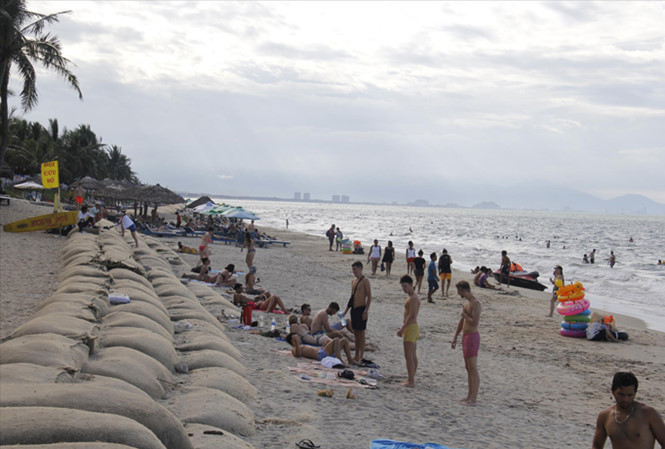 Day 5: Hoian - Danang Departure (B)
Day 5: Hoian - Danang Departure (B)Meals: Breakfast at hotel
Accommodations: N/A
Transfer: Private vehicle
Activities for today: Free time for shopping or free on Cua Dai beach until transferring to Danang airport for departure.
Rates vary frequently depending on group size, travel time, accommodation level, transportation and special touring requirements! Please contact us at [email protected] to get the best possible price.
- Private transfers
- English Speaking Tour guide
- Accommodation with breakfast (Check in at 14:00, check out at 12:00)
- All entrance fees
- All meals (B=Breakfast, L=Lunch, D=Dinner)
- Daily bottle of mineral water
- Boat trip in Hue
- Insurance
- Personal expenses
- Tip
- Drink
- Others not mentioned
- International flight ticket in/out Vietnam
- Early checkin and late checkout at hotel
- Single room
-
Day 1: Hue arrival (D)
-
Day 2: Hue city tour (B/L/D)
-
Day 3: Hue - Danang - My Son Holy Land - Hoi An (B/L/D)
-
Day 4: Hoian city and shopping or tailor tour (B/L/D)
-
Day 5: Hoian - Danang Departure (B)
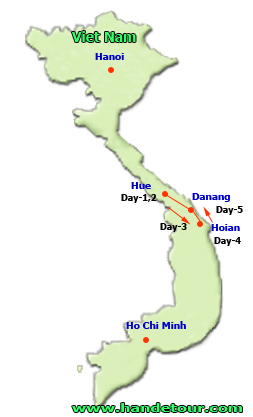
1. We are a real local tour operator and we understand our country more than others.
2. We are a legal company authorized by Vietnam Administration Of Tourism # 01-380
3. We are an official member of PATA # 6989, VITA # 2436, ASTA # 900169082, VCCI # 6178
4. We design your own itinerary without any charges, no matter how many changes.
5. We reply your request within 01 working day to save your valued time.
6. We provide qualified staff, experienced tour guide, well-maintained vehicles, good restaurants, best hotels
7. We only focus on high quality and luxury travel services to ensure our standard.
8. Listen to our customers' saying about us to see how they are satisfied with our services.







